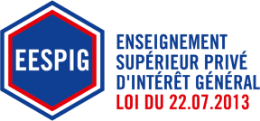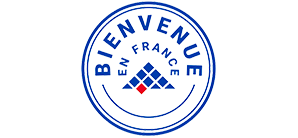Aeronautical Engineer
Reduction in the weight of aircraft, reduction in polluting emissions, increase in aircraft capacity, development and integration of electrical commands: innovation is constant in the aeronautical sector, to reconcile economic and technical performance, in complete security. Being an engineer in aeronautics means working on the design and operation of aircraft (aeroplanes, helicopters, balloons), and embedded systems. This might mean the technical conduct of the development programme, carrying out tests on the ground or in flight, developing production methods, optimising quality processes, or prospecting and negotiating contracts.
Specialised training and privileged contact with companies
At least 4 implementation projects are performed during the curriculum, for example:
- Preliminary design of Aircraft architecture (modelling).
- Determining the weight of an airliner’s wing.
- Dimensioning an exhaust nozzle.
- Study on functional safety for landing gear.
12 months of mandatory work-experience courses, for example:
- Discovering the company course in 1st year at EADS MOROCCO: Design of a computer program for monitoring aircraft maintenance.
- Engineer’s work-experience course in 4th year at EUROCOPTER JAPAN: Research on optimising stocks of helicopter replacement parts and proposing new solutions.
- End-of-study work-experience course in 5th year at DASSAULT AVIATION: Study on improving acoustic comfort in the cabin of the Falcon 7X.
Main partners
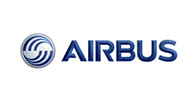
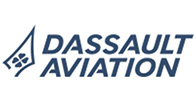
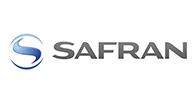
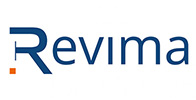
Associations for expressing your interests
Reconstructing the first seaplane, which made its maiden voyage in 1909: this is one of the projects undertaken by students of the Aeronautical Group, which also organises first experiences of flying (aeroplane, helicopter, aerobatics), travel in aeroplanes, conferences, visits to companies, pilot’s courses, etc. In 2010, the association will also organise the “Grandes Ecoles” Gliding Meetings.
The objective of Flying West is to help students at Laval discover aeronautical activities, offering them conferences, preparation for the pilot’s licence and the renovation of old aircraft.
Building and flying miniature aeroplanes: ESTACA Modelling provides an introduction to aero-modelling in all its forms: construction and flying of powered aeroplanes, gliders or indoor aircraft. The association has launched the “Exceptional Gliders” project, to provide the association with gliders of various dimensions (1.50 m to 4.40 m) and works together with former students.
- Sciences
- Human sciences and Engineering culture
- Transport Engineering
- Vocational Internship I (4 weeks)
- Sciences
- Human sciences and Engineering culture
- Transport Engineering
- Vocational Internship II (4 weeks)
- Sciences
- Human sciences and Engineering culture
- Transport Engineering
- Sciences
- Human sciences and Engineering culture
- Transport Engineering
- Transport Engineering
- Engineer Internship (6 month)
Aeronautical Syllabus - 1st Year
- Scientific Training.
- Training in the Human Sciences.
- Initiation Guided Transport, Initiation Automobile, Initiation Aeronautics and Space.
Vocational Internship I (4 weeks).
• Logic
• Calculus in R and C
• Plane and spatial geometry
• Functions with one variable
• Sequences
• Polynomials
• Linear algebra
• Differential equations and systems
• Frames of reference
• Coordinate systems
• Trajectories and equations of movement
• Particle mechanics
• Link mapping and analysis
• Technologies and operation of actuators
• CAO (SOLIDWORKS)
• Introduction to organic chemistry
• Reaction mechanisms (electronic, energy and kinetic aspects), Alkanes, alkenes, alkynes and hydrocarbons)
Aeronautical Syllabus - 2nd Year
- Scientific Training
- Training in the Human Sciences
- Aeronautics and Space
Vocational Internship II (4 weeks).
• Functions with several variables
• Vectoral analysis
• Power series and Fourier series
• Laplace transform and Fourier transform
• Conics
• Real-valued random variables
• Discrete and continuous usual laws
• Central limit theorem and approximations
• Introduction to object oriented programming
• Project in C++ language
• Advanced Excel
• Traction / compression / torsion / bending
• Strain and stress
• Mechanical behaviour
• Beam analysis and dimensioning
• Physical and mechanical properties
• Different types of materials
• Crystallography
• Study of combustion characteristics
• Free enthalpy
• Redox
• Single, alkali and hydrogen fuel cells
• MSystems modeling (equations and transfer functions)
• Elementary command loop
• Systems frequency studies
• Matlab application
• Periodic signals
• Functional approach (amplifiers and filters)
• Frequency responses
• Functional aspects of converters
• Inverters, converters and continuous current machines
• Propagation and superposition phenomena
• Maxwell equations
• Applications to acoustic waves and electromagnetic waves in a vacuum
Aeronautical Syllabus - 3rd Year
- Scientific Training
- Engineering Culture
- Aeronautics and Space
• Isostatism of a mechanism, analysis, determination and functional incidences
• Theory of contact between solids
• Dimensioning of guidance, assembly and power transmissions
• Introduction to fatigue
• Introduction to various modes of heat transfer
• Conduction (heat equation, stationary and variable regimes)
• Convection
• Radiation
• Analysis of periodic signals
• Signal energy and power
• Analogue digital conversion
• Introduction to digital fi ltering
• Fluid dynamics
• Dimensional analysis and similarity
• Boundary layer (laminar and turbulent)
• Power electronics
• Electromechanical conversion (energy effi ciency)
• Structure and principle of electric machines (synchronous and asynchronous)
• Application to electrical motors and converters
• Logic functions
• Combinatory and sequential circuits
• Introduction to information transmission
• Linear systems
• Interpolation, approximation and integration
• Ordinary differential equations (explicit and implicit methods)
• Partial differential equations (finite differences)
• Model complexity analysis
• Parameter analysis and dimensioning
• Programming, validation and optimization
• Presentation of UML
• UML static and dynamic diagrams
• Development of an application
• Group dynamics
• Formalization of the professional project
• Structures and systems architecture
• Aircraft design methods
• Systems engineering method
• Reminders on properties of fluids
• Aerodynamics forces and moments
• Incompressible and compressible fl ow in subsonic, transonic, supersonic and hypersonic
• Application to flow calculations in pipes
• Shock theory
• Reminder of flight mechanics
• Flight equations
• Flight phase simulation
• Classification of aeronautical gas turbines
• Application to the thermodynamics of gas turbines
• Aerodynamics of compressors and turbines
Aeronautical Syllabus - 4th Year
- Scientifics training
- Engineering Culture
- Aeronautic
• Variational formulation and meshing
• Structure discretization
• The various families of finite elements in structure calculation
• Calculation of elementary matrices, assembly and calculation of the solution to a static problem
• General hypotheses of continuum mechanics
• Theory of elasticity, viscoelasticity and thermoelasticity
• Introduction to damage, rupture and fatigue
• Elastic problem solving methods
• Introduction to dynamic and acoustic phenomena
• Theoretical and experimental modal analysis
• Linear acoustics, acoustic modes and acoustic impedance
• Mass and energy balances in open systems
• Conversion of thermochemical energy into heat energy
• Conversion of thermochemical energy into mechanical – electrical energy
• Architecture design of hydraulic systems
• Modelling of head loss
• Power dimensioning
• Introduction to networks and components
• Coupling of mechanical, electrical, thermal and hydraulic models
• Multi-physical modeling tools
• Basic concepts of software architectures
• Task scheduling
• Synchronization and inter-task communication
• Control of discrete-time systems
• Introduction to sequential systems
• Real-time prototyping
• Inverse model
• Modelling control of asynchronous and synchronous machines
• Introduction to quality
• Process model and control graph
• Certification and customer relations
• Statistical inference (sampling and estimation)
• Statistical process control
• Experimentation
• Introduction to industrial company organization and environment
• Production planning (flows, stock management, needs calculation)
• Introduction to lean management
• Social behaviour in the company
• Managing international projects
• Structuring a project into tasks and phases
• Business plan
• Formalization of the professional project
• The network
• The aims of technical regulation
• Roles and functions of the regulator, certifier and operator
• The various domains of technical regulation
• Presentation of the special features of business planes
• Dimensioning of an aircraft (fuselage, wing components, attachments and panels for buckling)
• Introduction to aeronautical composite materials
• Aerodynamic coeffi cients of a wing profi le (incompressible, compressible subsonic, supersonic and hypersonic)
• Study of elongated bodies in supersonic and hypersonic flows
• Dimensioning of rotating components
• Functional modeling of engine components
• Dimensioning the air stream
• Combustion cycle
• Engine integration
• General information on helicopters
• Analysis of components (main rotor, rear rotor and blades)
• Composite materials
Aeronautical Syllabus - 5th Year
- Specialisation – Aeronautic
Engineer Internship (6 month).
• Economic, environmental and regulatory constraints
• Systems engineering
• Concurrent engineering
• Dimensioning loads
• Needs specification
• Rupture
• Fatigue
• Damage mechanics
• Non-linear dynamics
• Materials for aeronautical structures (metals, composites)
• Industrialization constraints (manufacture / assembly)
• Qualification
• Cabin and cockpit layout / ergonomics
• Landing gear, engine, circuit integration
• Propulsion system architecture
• Interface management
• Acoustics and Aero-thermodynamics
• Nacelles (interface moteur/nacelle)
• On-board energy systems (Management, optimization)
• Safety and certifi cation
• Architecture of avionics systems
• Integration of avionics systems
• Specifi cation, design and validation of sub-systems (flight controls, navigation, communication, surveillance)
• Flight controls
• Safety, reliability, maintainability constraints
• Regulatory aspects
• Air Transport regulation
• Aircraft airworthiness rules and procedures
• Management of air space
• Air operations rules and procedures
• Systems maintenance and planned maintenance
• Safety factor in air transport
• Model engineering and critical functions
• Code generation, non critical application
• Critical application design, certifi ed code generation
• Software verification and validation
• On-board IT and secure networks
• Calculators, on-board networks, ARINC standards, Electronics, Multiphysical modeling, on-board power management





